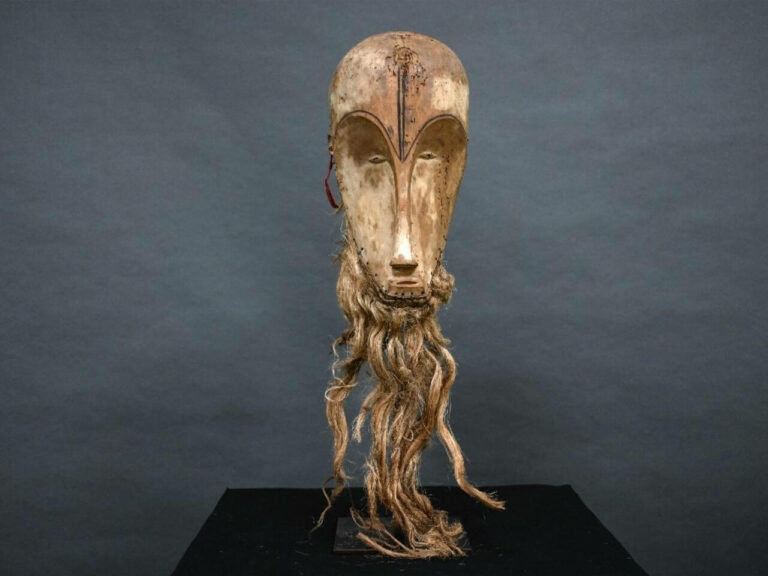A captivating legal battle is unfolding in the French legal system, highlighting the question of whether individuals can claim additional compensation for works of art or artifacts that, after being sold, turn out to be far more valuable than originally thought.
An 81-year-old woman and her 88-year-old husband stumbled upon an African mask while decluttering their vacation home. Deciding to keep it out of a garage sale, they sold it to a local antique dealer in September 2021 for a modest €150 ($157).
To their dismay, they learned from a news report a few months later that the mask had been auctioned in Montpellier for a staggering €4.2 million ($4.4 million). It was identified as a rare Fang mask, historically used in secret African rituals. Carved at the end of the 19th century, according to carbon-14 analysis, this artifact was acquired in Gabon between 1917 and 1918. It was brought back by Governor René-Victor Edward Maurice Fournier (1873-1931), the husband’s grandfather, who was a colonial governor in Africa in the early 20th century. The mask has been kept in the family home since the 1920s.
Feeling cheated, the couple took legal action against the antique dealer. After much legal maneuvering, an appeals court in France ruled on June 28 that their claim had merit. As a result, the proceeds of the sale have been withheld while the case proceeds.
At the heart of the couple’s complaint is the belief that the dealer, aware of the mask’s potential value, deliberately kept it under wraps. Instead of displaying it in his shop, he contacted auction houses Drouot Estimation and Fauve Paris. Their respective appraisals placed its value between 100 and 120 euros and 400 and 600 euros. But seeking further clarity, the dealer turned to a specialized auction of African artifacts in Montpellier. Advanced tests, including carbon-14 analysis and mass spectrometry, dated the mask to the 19th century. An expert ethnologist confirmed its ritual use by the Ngil society of Gabon until the 1920s.
Initially priced between 300,000 and 400,000 euros, the mask was eventually sold at auction in March 2022 for 4.2 million euros ($4.4 million). Court documents highlight its extraordinary rarity, noting that only a handful of such masks are known to be in global Western collections.
The couple’s legal team contends that the sale could potentially be invalidated due to the initial undervaluation of the mask. They draw parallels to cases in which artworks initially misattributed to lesser-known artists have been re-authenticated, leading to the invalidation of transactions and just restitution.
In an early stage of the dispute, the dealer offered the couple a settlement of €300,000 ($315,000). However, the offer was rejected, largely due to the objections of the couple’s children. As a result, the couple filed a lawsuit in Alès seeking both the seizure of the sale proceeds and damages. Although the court in Alès sided with the dealer, the couple persisted and appealed to the court in Nîmes.
To add to the intrigue, the couple claimed that the dealer had worked with their gardener to determine the mask’s origin before approaching auction houses.
The dealer defends his actions by emphasizing his lack of expertise in African art, claiming he’s a second-hand dealer, not an antiquities specialist. He sought appraisals based on an auctioneer’s suggestion, not on any inherent belief in the mask’s value.
As the case is still pending, the Court of Appeal has ruled that the proceeds of the sale, amounting to €3.1 million after deductions, will remain seized until a final decision is reached.
The “Gouverneur Fournier” mask is one of a small number of reference specimens known to museums and collections in the West. Indeed, the traditional customary justice rites of Ngil society were abandoned in the 1920s, putting an end to the creation of the instruments of this institution. Half of them are in museums, and the few that have come up for sale have broken records, such as the one from the former Vérité collection sold in June 2006 for 5.750 million euros.



